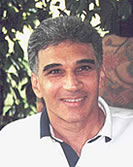Having a foundation of repetition practice does wonders to support your strokes under pressure. Analogous to this is the importance of a foundation (repetition practice) to a building (strokes) when bad weather (pressure) hits. The deeper and stronger the foundation, the more reliable the building.
Many of my readers understand this concept of repetition practice as a foundation, but still wonder how to go about constructing that foundation. A perfect illustration came to me in the form of a spirited young junior named Colleen. She recently traveled in from another state to train with me for eight days, two hours every day. Here is the story of the little tennis girl who could.
Colleen is fourteen years old. She is a nice player, ranked fortieth in her state in her age group. Her training regimen with me would be a combination of the ball machine (my teaching 'partner') and players hitting with her each day. I teach all players the Tennis Warrior System relative to their level of play and their conditioning. Since I had not worked with Colleen before, I had to quickly assess her conditioning, concentration and drive.
On day one of training, Colleen hit 400 groundstrokes. She did not respond too well physically, which made me question her foundational conditioning. Would I have to let up on her training the rest of the week? We had two hours of practice every day and 400 balls to hit is a low number. (By the way, this does not count serves, volleys or overheads, just groundstrokes.) Colleen's concentration and desire on the first day were subdued but promising.Ê
The next day, I was pleasantly surprised. Colleen's total went up to 700 groundstrokes and she was not tired at all. Maybe her foundational conditioning was better than I thought! Colleen seemed to be enjoying all the repetition training as I challenged her with cones to hit and various groundstroke repetition patterns. These exercises all enhance the body's natural learning process toward developing a feel with spontaneous, instinctive strokes.
Repetition does not mean just standing in one position hitting over and over again, but developing a nimble style from a number of different patterns, drills and play. To give Colleen even more variety in her repetition practice, I would bring in a hitter for an hour then alternate with the ball machine.
As the first few days passed, I began to realize I had an exceptional player on my hands. Colleen not only possessed extraordinary focus and concentration, but also showed tremendous motivation and drive. I began to test her resolve. On day three, she hit 750 balls and there was still no break in her concentration or conditioning. Then 850 balls, 900 balls and on the sixth day she reached 1,100 balls. I was astonished! She not only followed the program to a T, she was asking to hit more balls. Unbelievable concentration! Unbelievable focus! Unbelievable drive! Unbelievable foundational conditioning! And she made my exclusive 1,000 ball club.
The next day, as Colleen continued her excellent training regime, I told her about one of the pros that I train who holds the record for most balls hit in a week. Colleen quickly expressed her desire to beat this record of 7,000 balls. I began to wonder if she could do it. Her numbers for the final two days would have to be extremely high, but she was making me a believer in her incredible capacity to focus and stay focused! I was putting my money on her.
That day she hit 1,400 balls. Amazing! I actually had to hold her back, telling her that while she may not need a rest, the ball machine did!
A few surprises came through in her game on that day, too. Colleen began to feel some new sensations in her strokes. Remember how I told you that for every 1,000 balls you hit you would feel a little improvement, but with 5,000 balls you would have a more substantial improvement? Well, by that day Colleen had hit over 5,000 balls and she experienced some breakthroughs in the feel of certain shots. Repetition works! Her strokes were changing, yet I was not forcing the mechanics. The repetition was molding her game according to her own individual style, form and creativity.
On the last day, she needed to hit 1,300 balls to tie the pro's weekly record. She was definitely exhausted from all of the intense training, but she wanted to give it a try. Players from other courts, aware of her goal, came over to watch as she hit ball after ball after ball after ball. She was closing in on 1,300 balls when all of a sudden the ball machine broke down and she was unable to reach her goal. I'm only kidding! She smashed through the 1,300 mark and drove the total up to 1,425 balls hit. She broke the pro's record! Her final total for seven days was 7,125 balls hit. Way to go, Colleen! Conditioning: outstanding. Concentration: exceptional. Drive: sensational! One player even asked for her autograph.
Do you have to hit this many balls to improve? Not necessarily. It is the principle of the process that counts. Whether you hit 300 balls or 7,000 balls per week, this type of repetition foundation is what you need for your game to grow. I told Colleen to try and hit 500 balls twice a week in addition to her junior program and any other play.
Well, there you have it. This is the method I have been training players with for over 25 years. If there were any secret to improving in tennis, here it is: Stop focusing on conscious commands and verbal feedback to learn mechanics. You are not going to debate your opponent, you are going to hit balls at them. Instead, focus on your body's unconscious sensory feedback system through weeks and months of repetition practice. Build a sure foundation, and the strokes will follow.


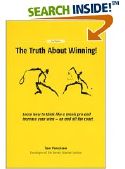
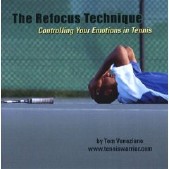
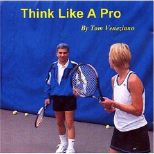
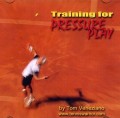



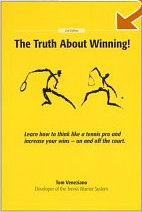
 You will join 13,000 other subscribers in receiving news of updates to the Tennis Server along with monthly tennis tips from tennis pro Tom Veneziano.
You will join 13,000 other subscribers in receiving news of updates to the Tennis Server along with monthly tennis tips from tennis pro Tom Veneziano. 